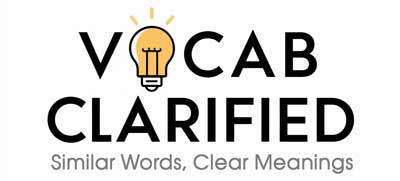Have you ever come across the words homogenous and homogeneous and wondered which one to use? They look similar and even sound alike, but they have distinct meanings and uses in different contexts. This confusion is common, especially when talking about science, biology, or even society.
In this post, we’ll explore the differences between homogenous and homogeneous, helping you understand when and where to use each term correctly.
Understanding Homogenous And Homogeneous
Homogenous: Definition and Usage
Homogenous is often used to describe things that are uniform or similar in nature but has come to be used less frequently. The term is derived from homogeny, meaning “similar in kind or nature”.
Though technically correct, the term homogenous is sometimes used interchangeably with homogeneous, which has become more common in modern usage.
For example:
- “The rural town was described as culturally homogenous.”
- “A homogenous mixture contains substances that are similar in composition.”
Homogenous can still be used, but its usage is more limited today, especially outside specific fields like biology.
Homogeneous: Definition and Usage
Homogeneous is the more widely accepted and commonly used term today. It refers to something that is composed of parts or elements that are all of the same kind or nature.
This word is often used in scientific and sociological contexts to describe uniformity, especially when it comes to mixtures, groups, or populations.
For example:
- “The population of the city was remarkably homogeneous in terms of ethnicity.”
- “The scientist studied a homogeneous solution where all components were evenly distributed.”
Homogeneous has become the standard term when describing something that is uniform throughout.
Side-by-Side Comparison
| Aspect | Homogenous | Homogeneous |
| Definition | Refers to things that are similar in kind or nature, though less commonly used today. | Refers to something uniform or consistent throughout, commonly used in modern contexts. |
| Common Usage | “The region is relatively homogenous in terms of culture.” | “They prepared a homogeneous mixture for the experiment.” |
| Key Differences | Less commonly used and may be specific to certain fields. | The standard term used in modern writing to describe uniformity. |
When deciding between homogenous and homogeneous, consider your audience and context.
In most modern contexts, homogeneous is the preferred term, particularly in science, social studies, and everyday writing.
Everyday Usage Examples
Here are examples to illustrate how homogenous and homogeneous fit into everyday language:
- Homogeneous: “The classroom had a homogeneous group of students with similar learning styles.”
- Homogenous: “The local economy was based on homogenous industries like farming and fishing.”
- Homogeneous: “Chemists often work with homogeneous solutions for accuracy in their experiments.”
- Homogenous: “Early civilizations were often homogenous in language and customs.”
- Homogeneous: “The soil in the garden was homogeneous, which helped the plants grow evenly.”
- Homogenous: “Some ecosystems are homogenous, featuring very few species.”
Conclusion
In conclusion, while homogenous and homogeneous are similar words, homogeneous is the more commonly used and accepted term today, especially in scientific and formal contexts.
Use homogeneous when describing something uniform, whether it’s a mixture or a population. Homogenous is still correct but is less common and may be used in more specialized or traditional contexts.

